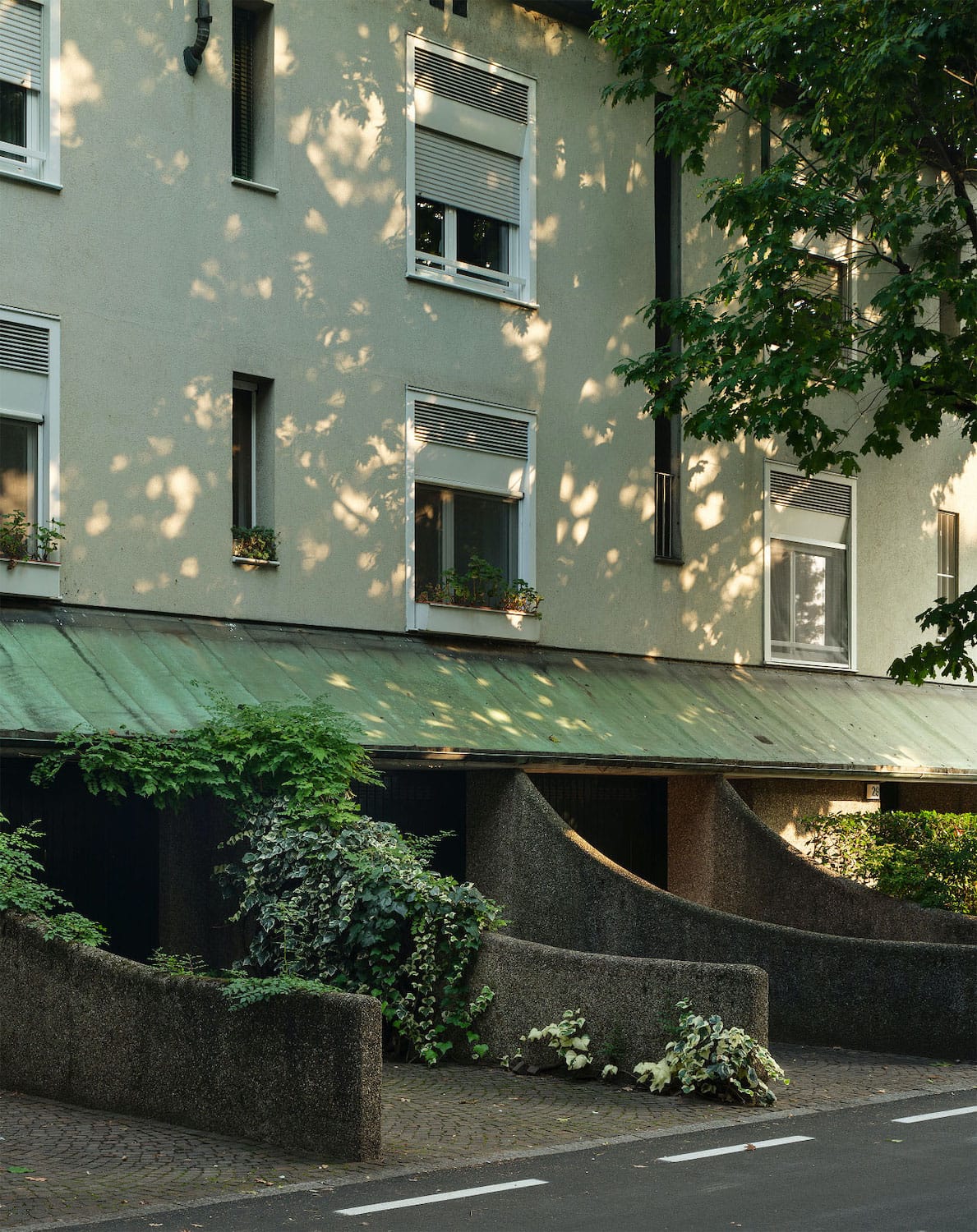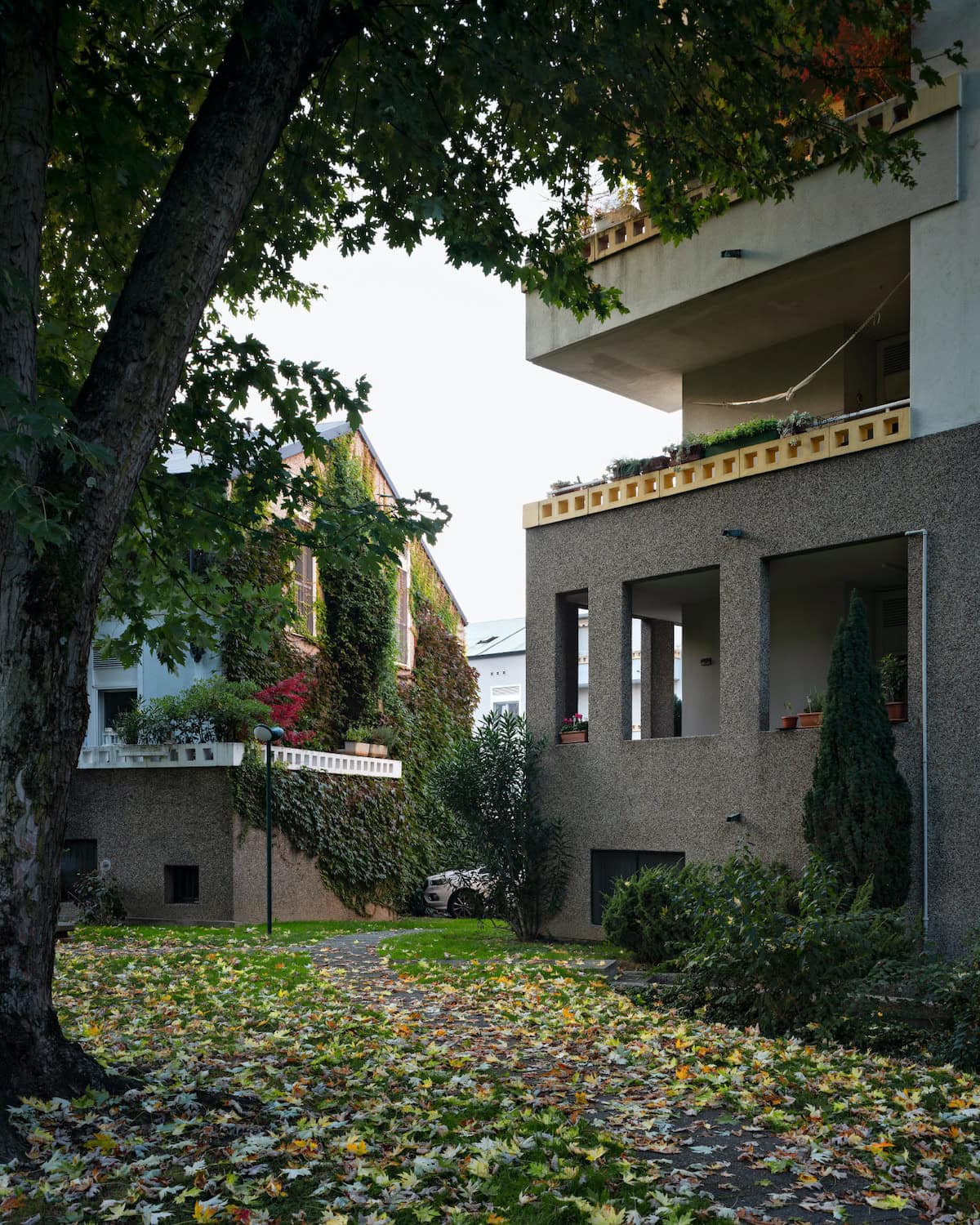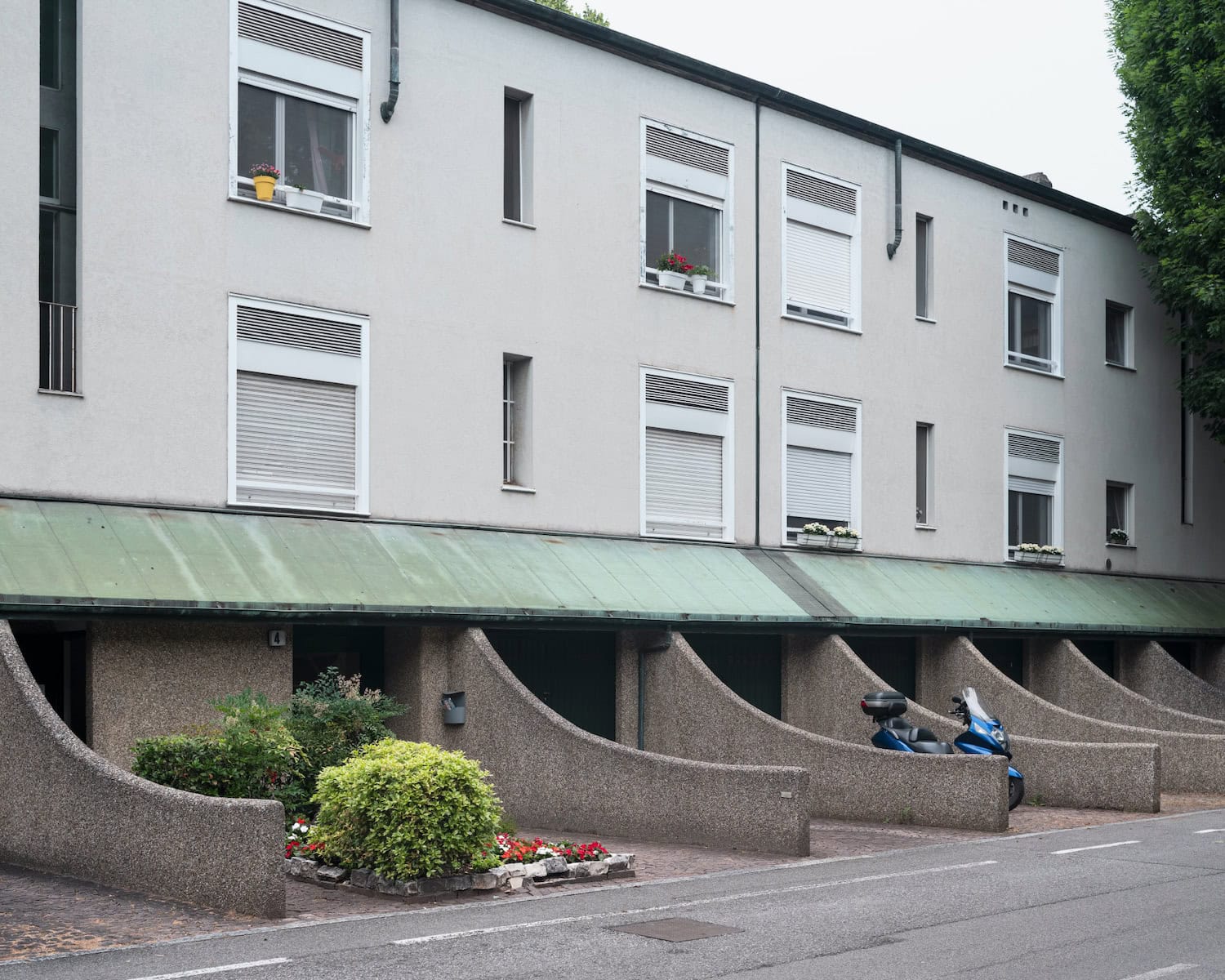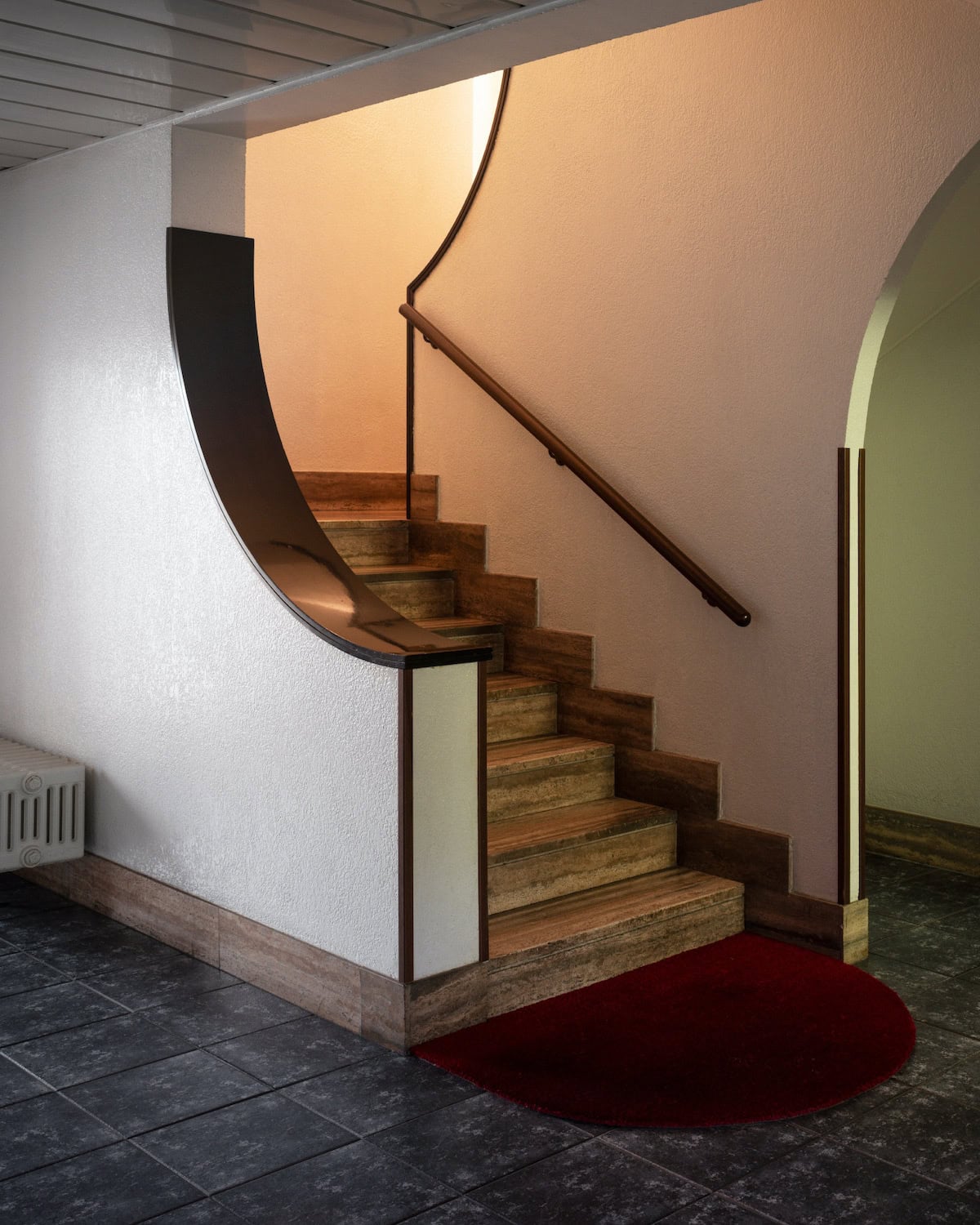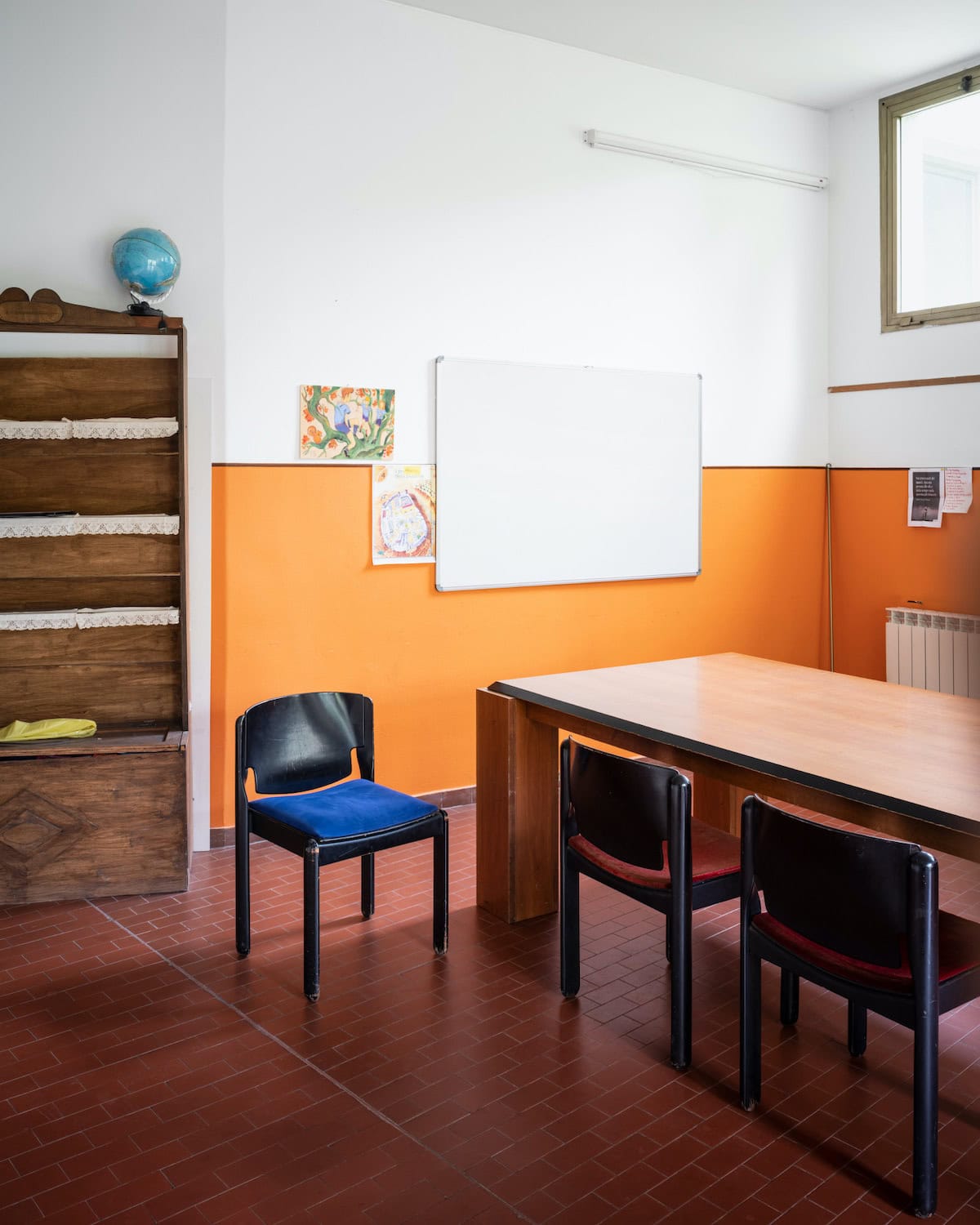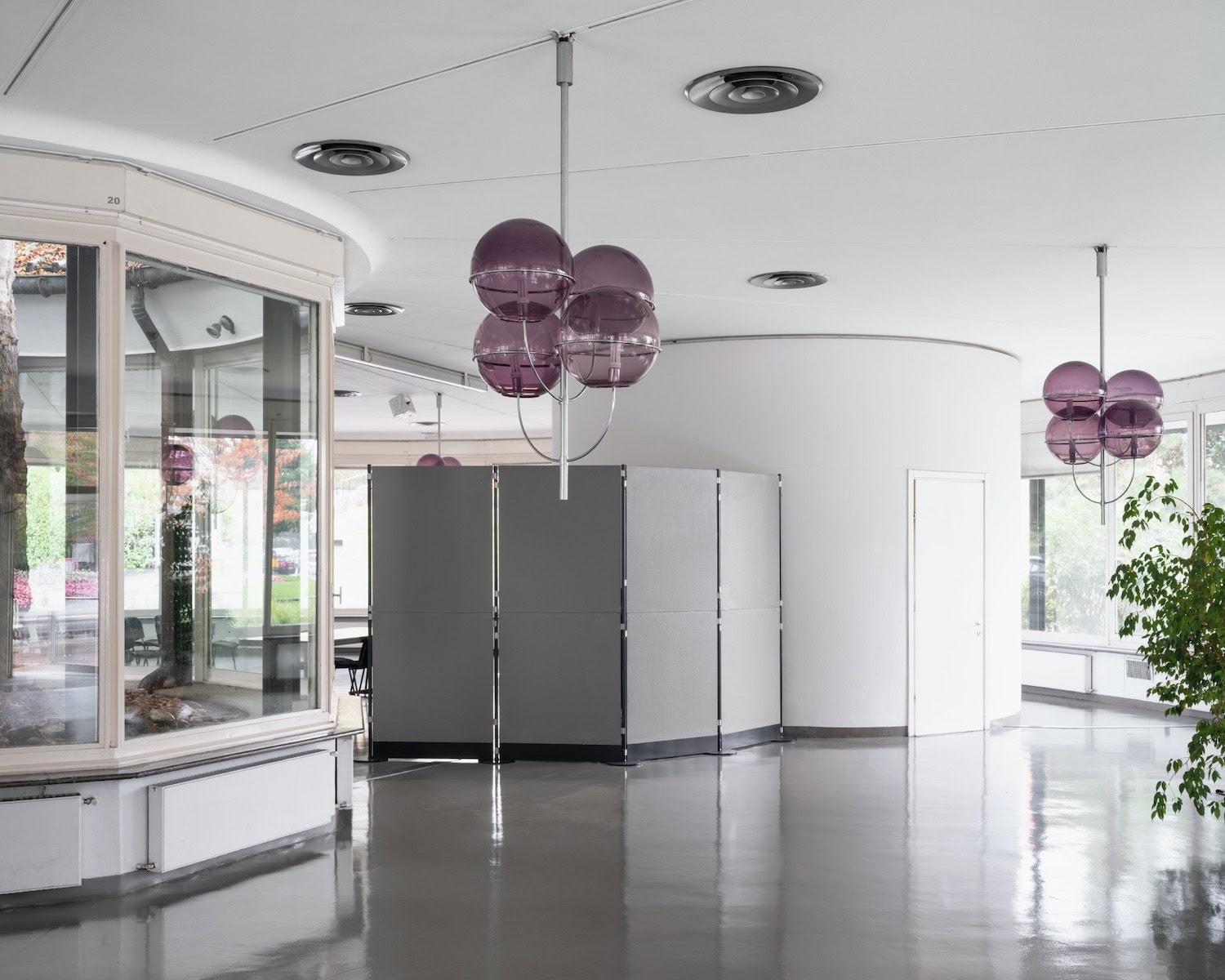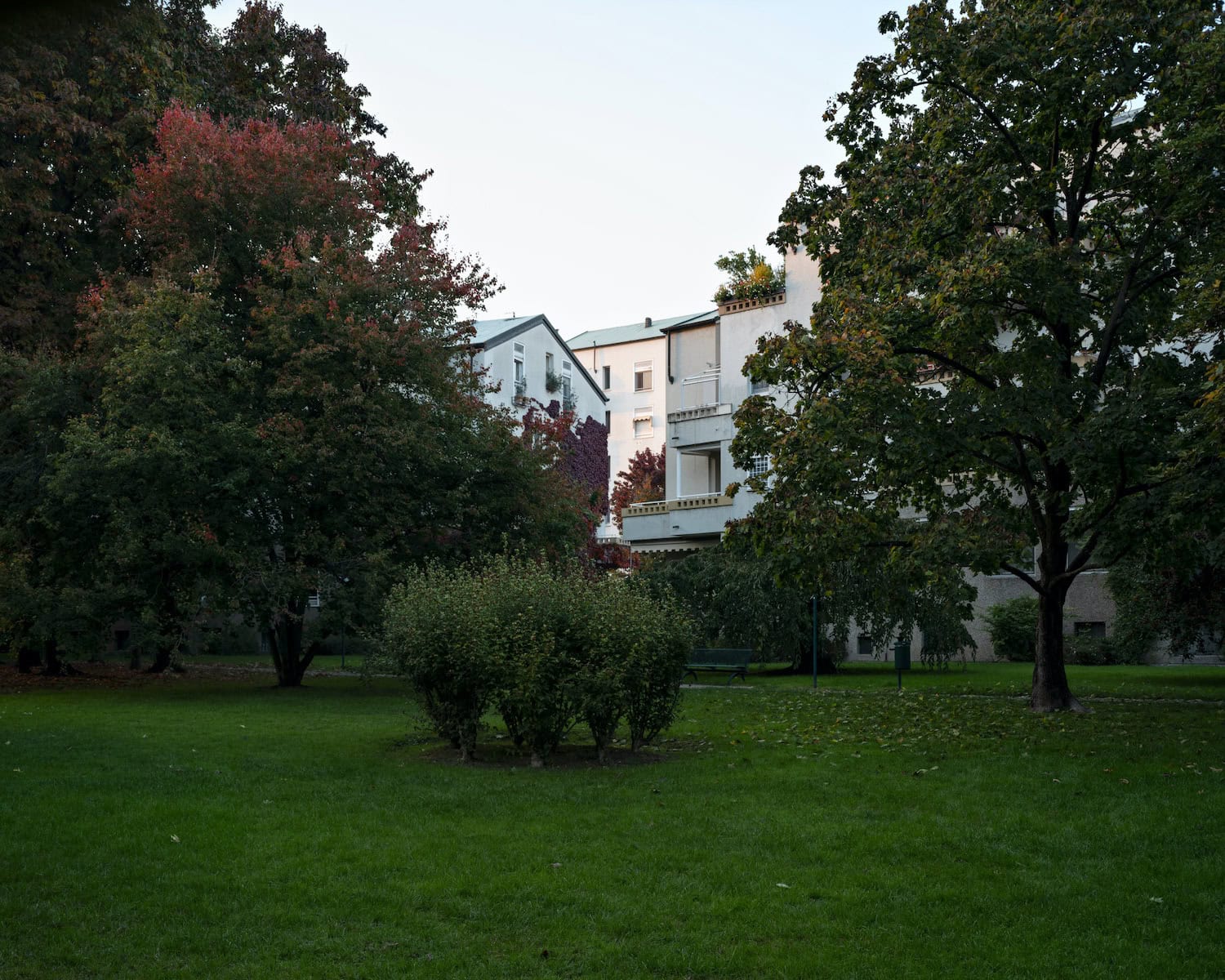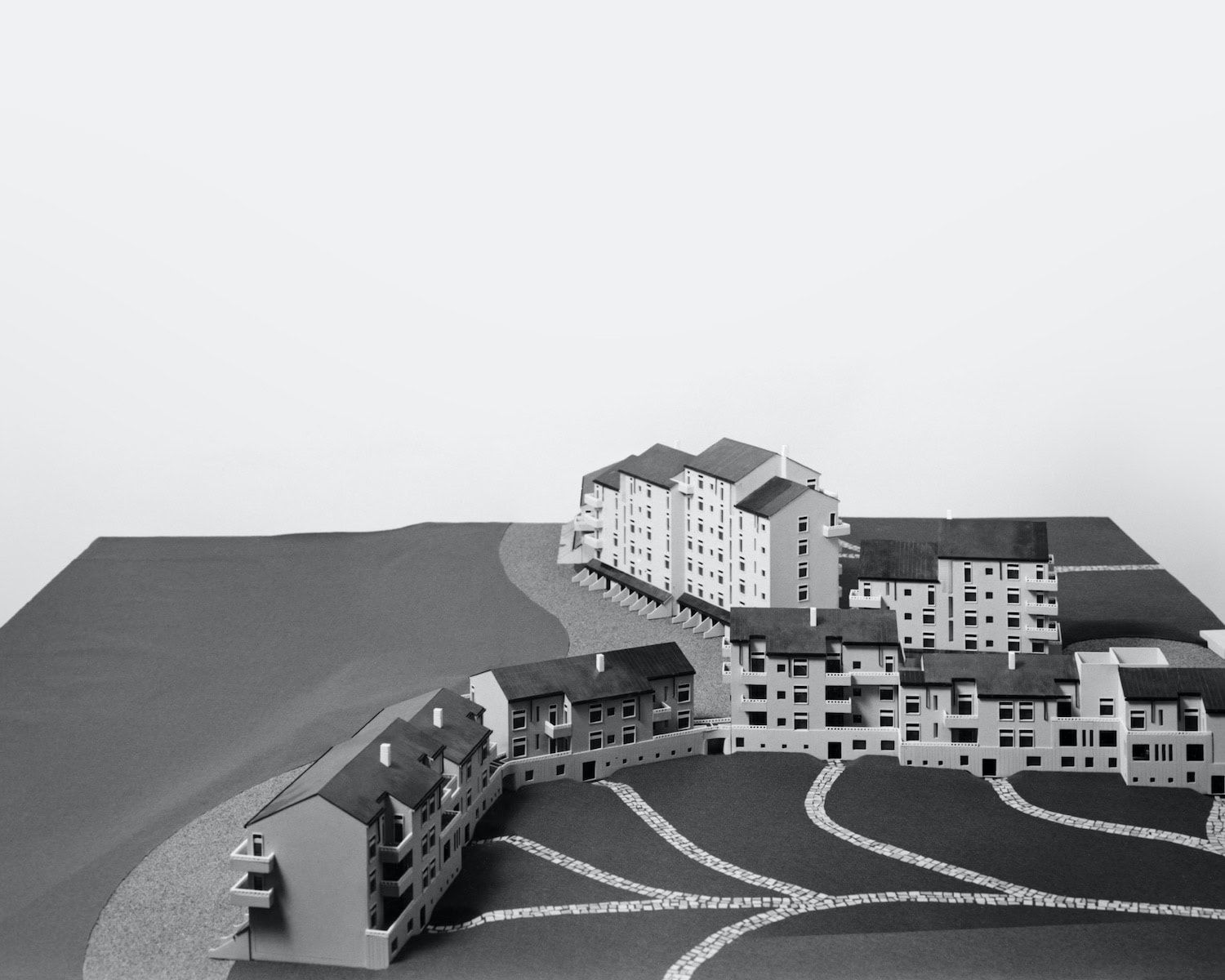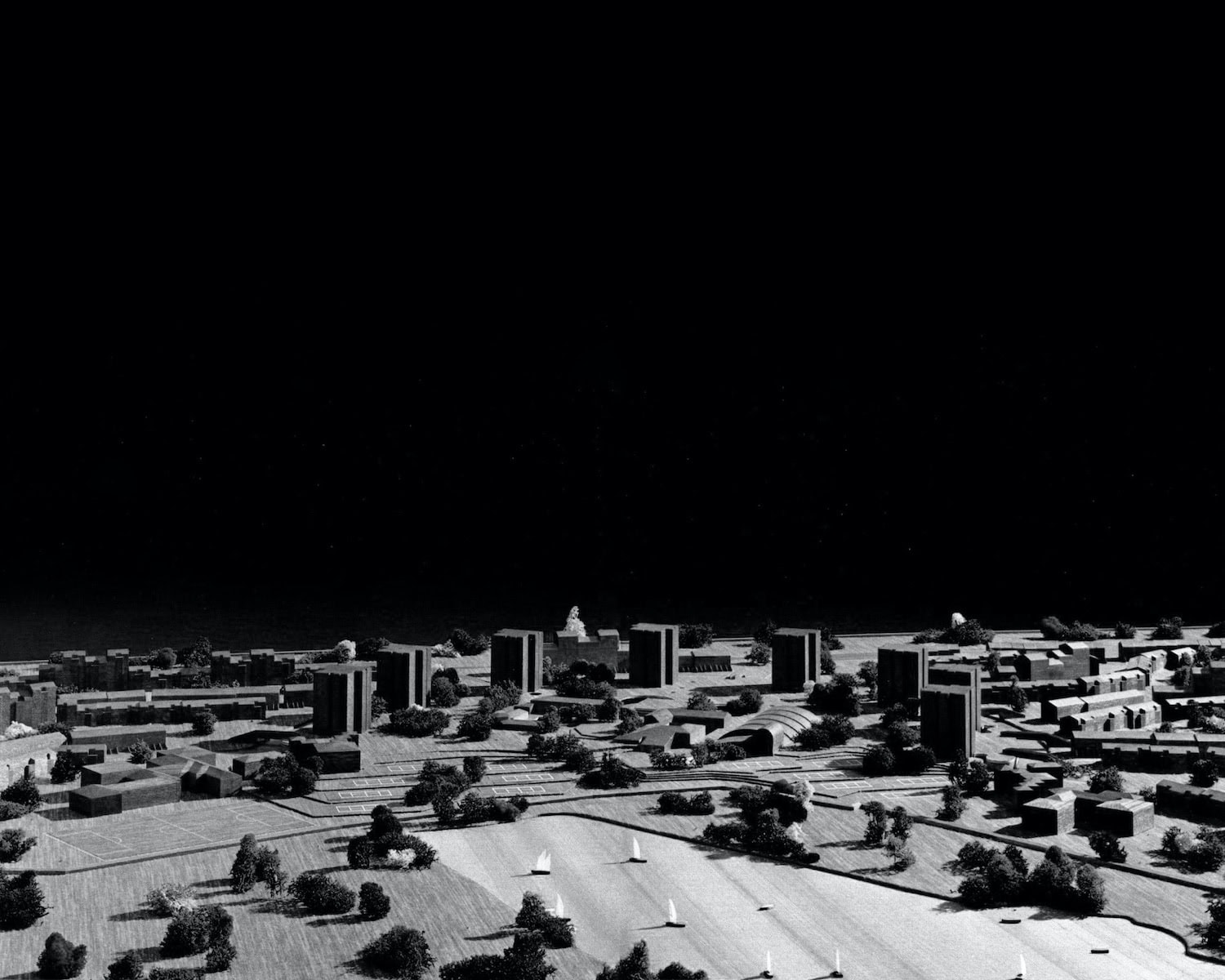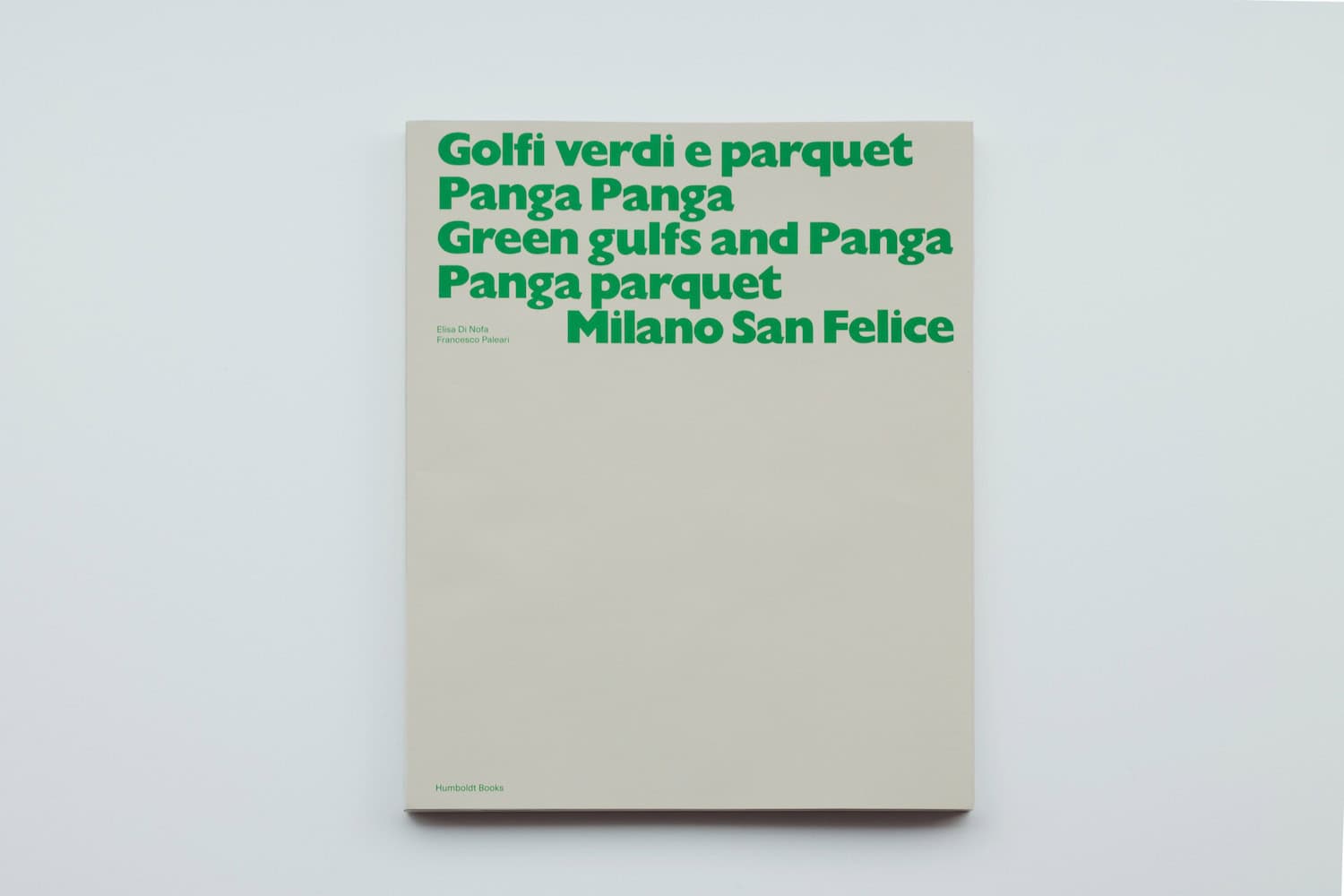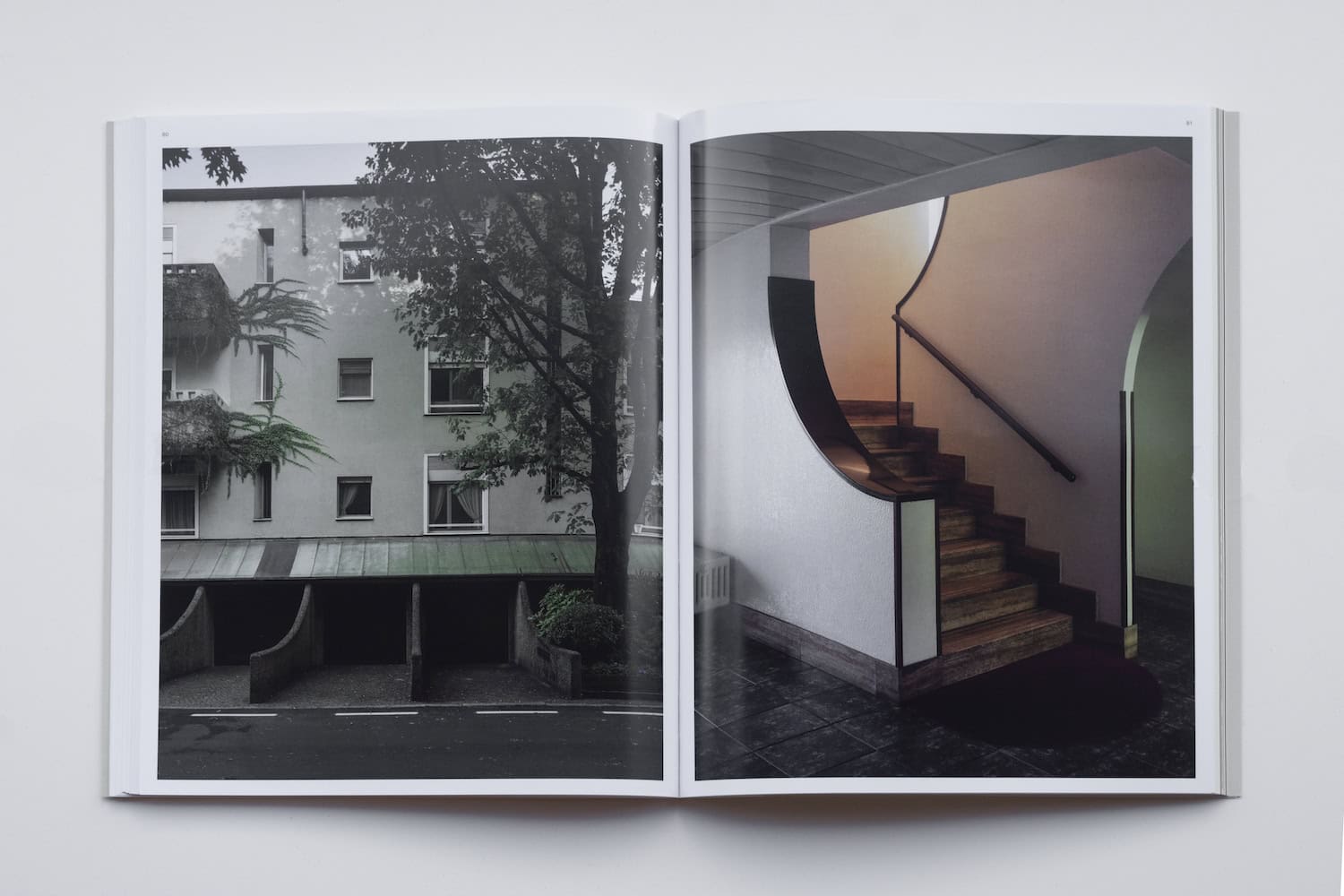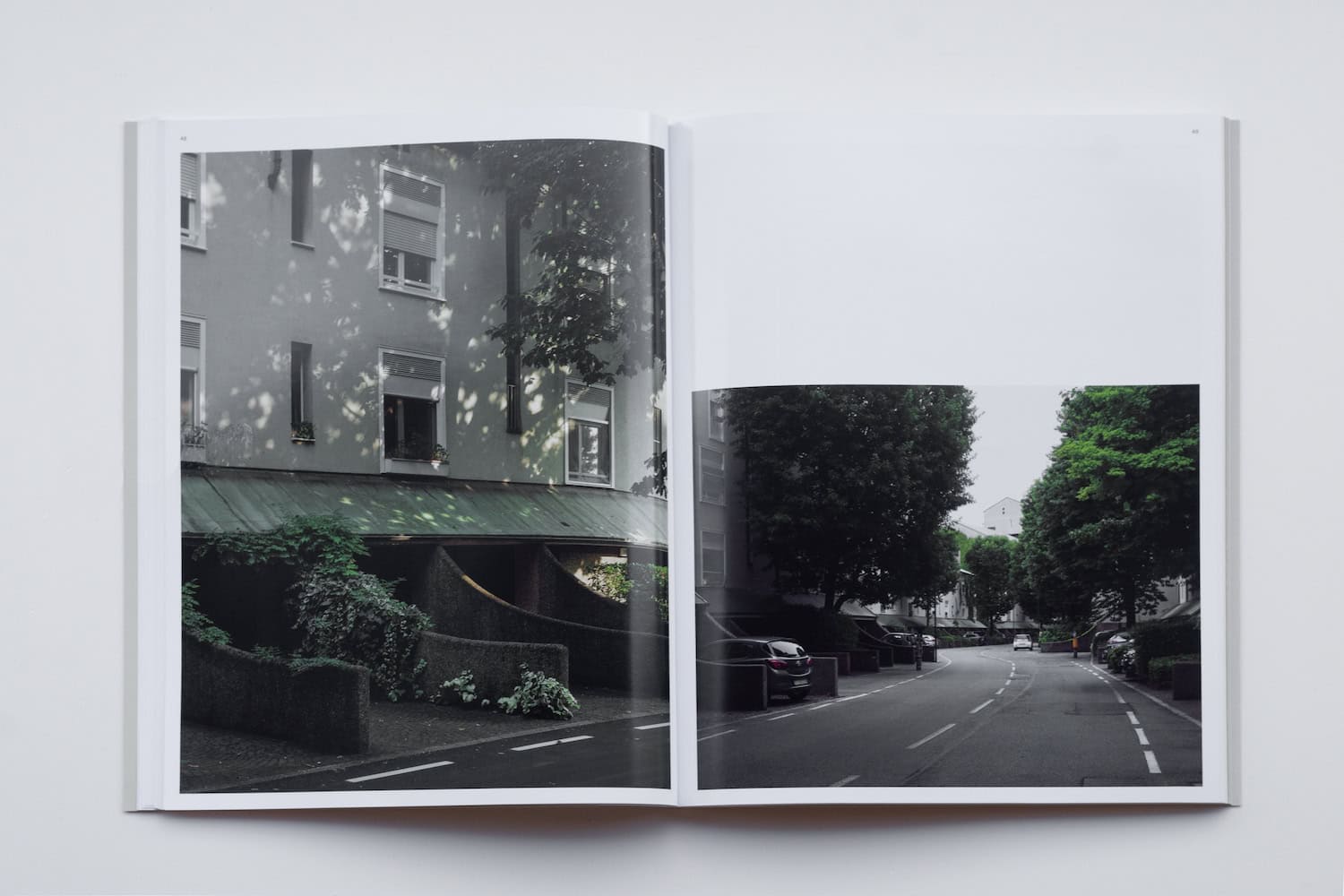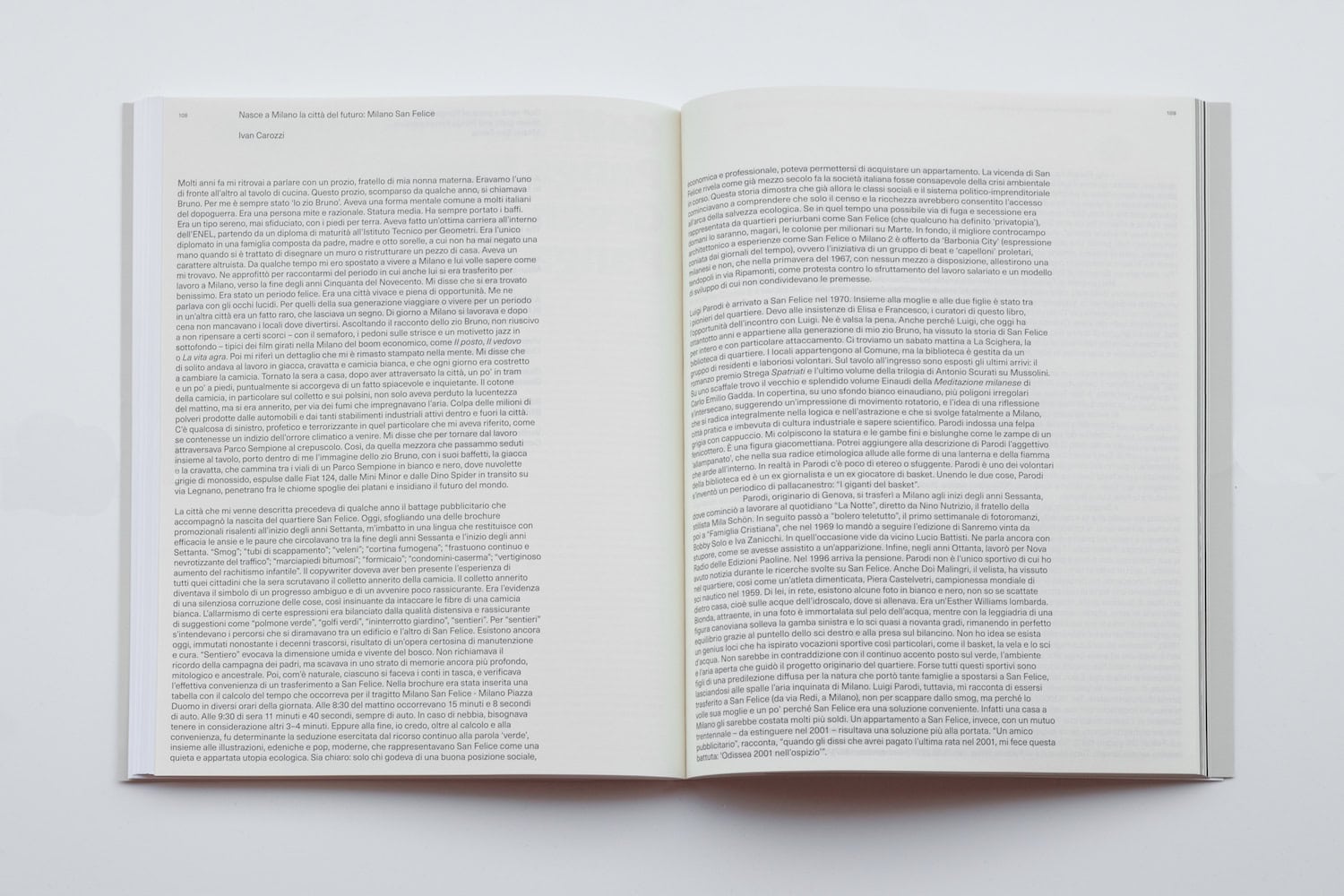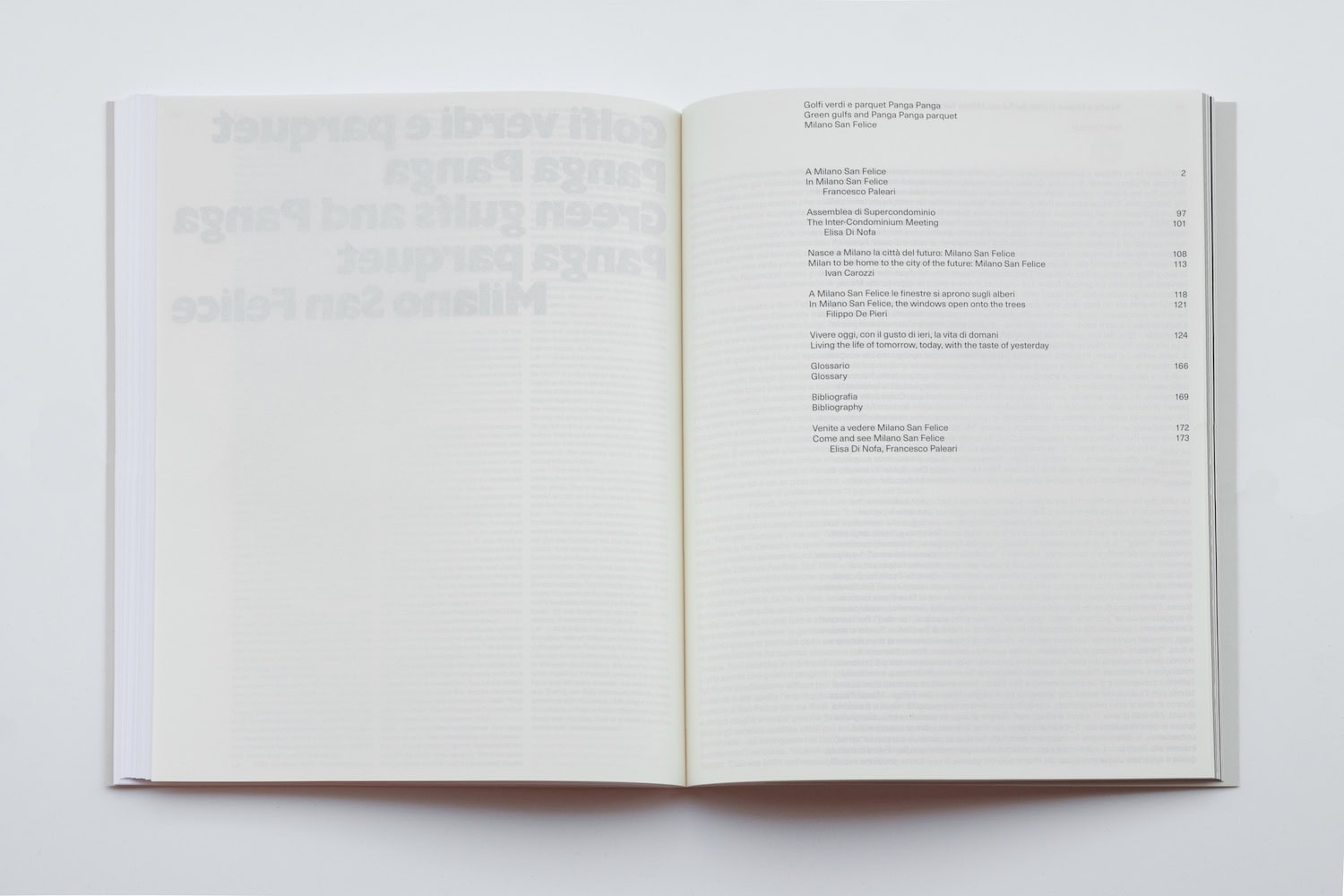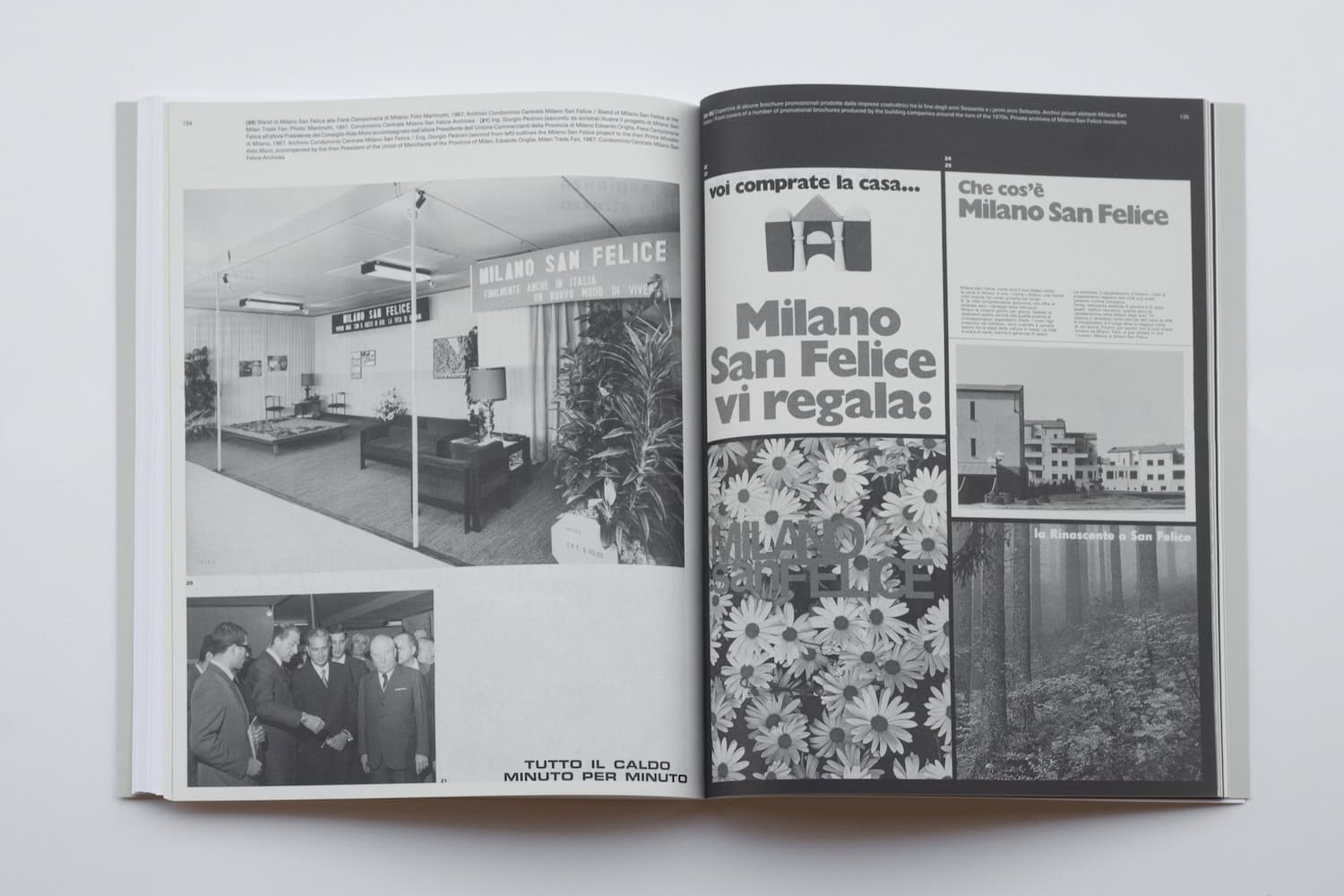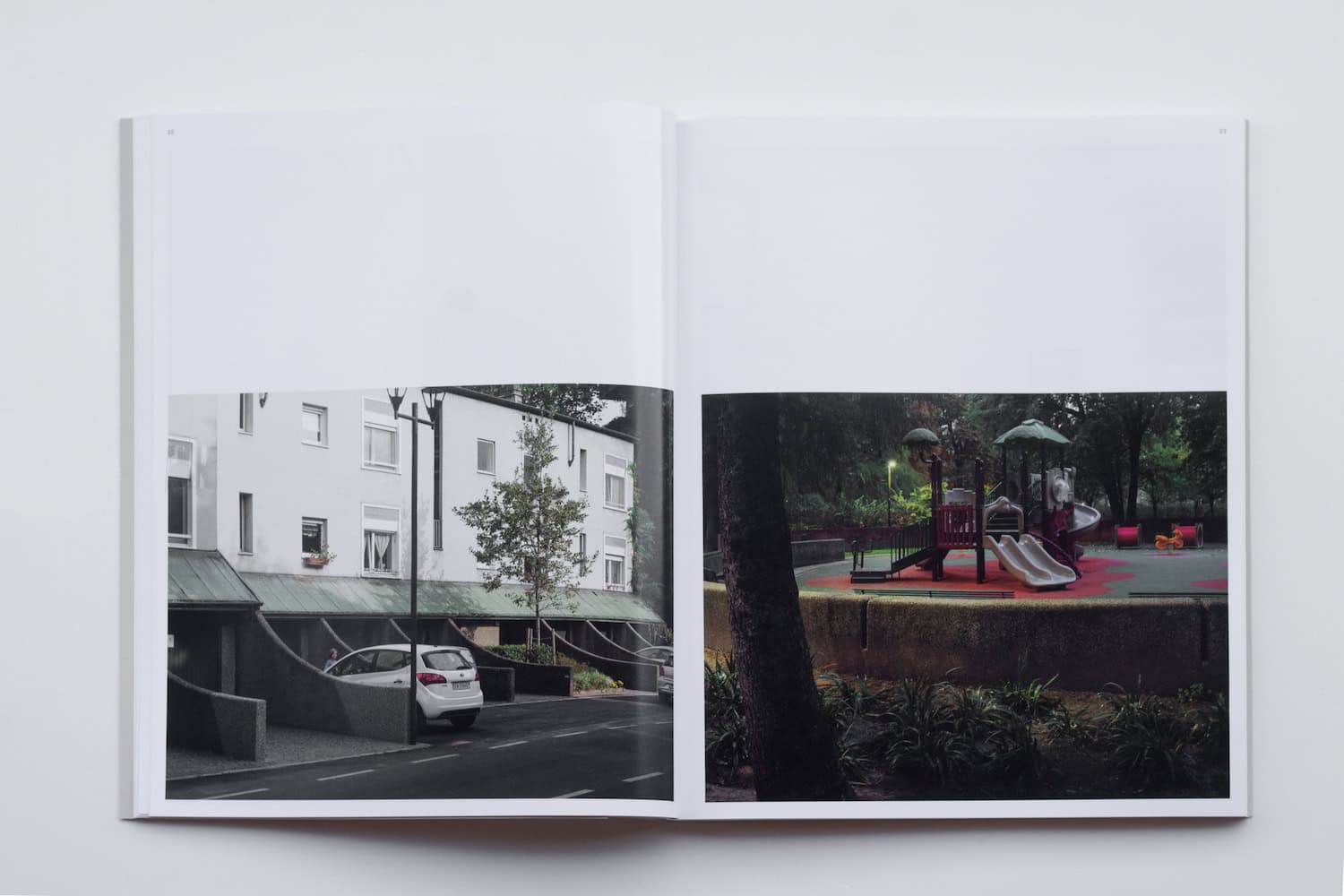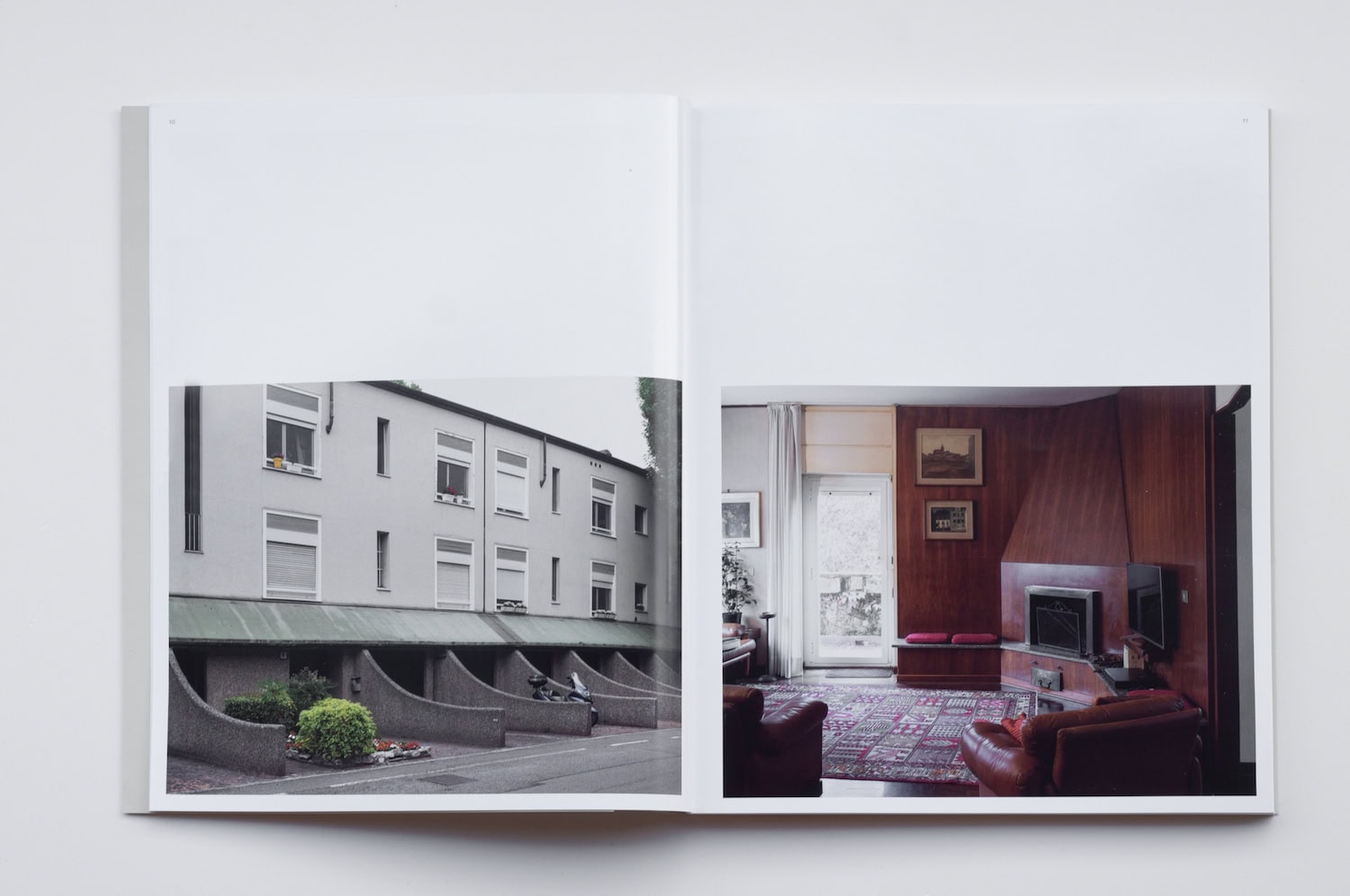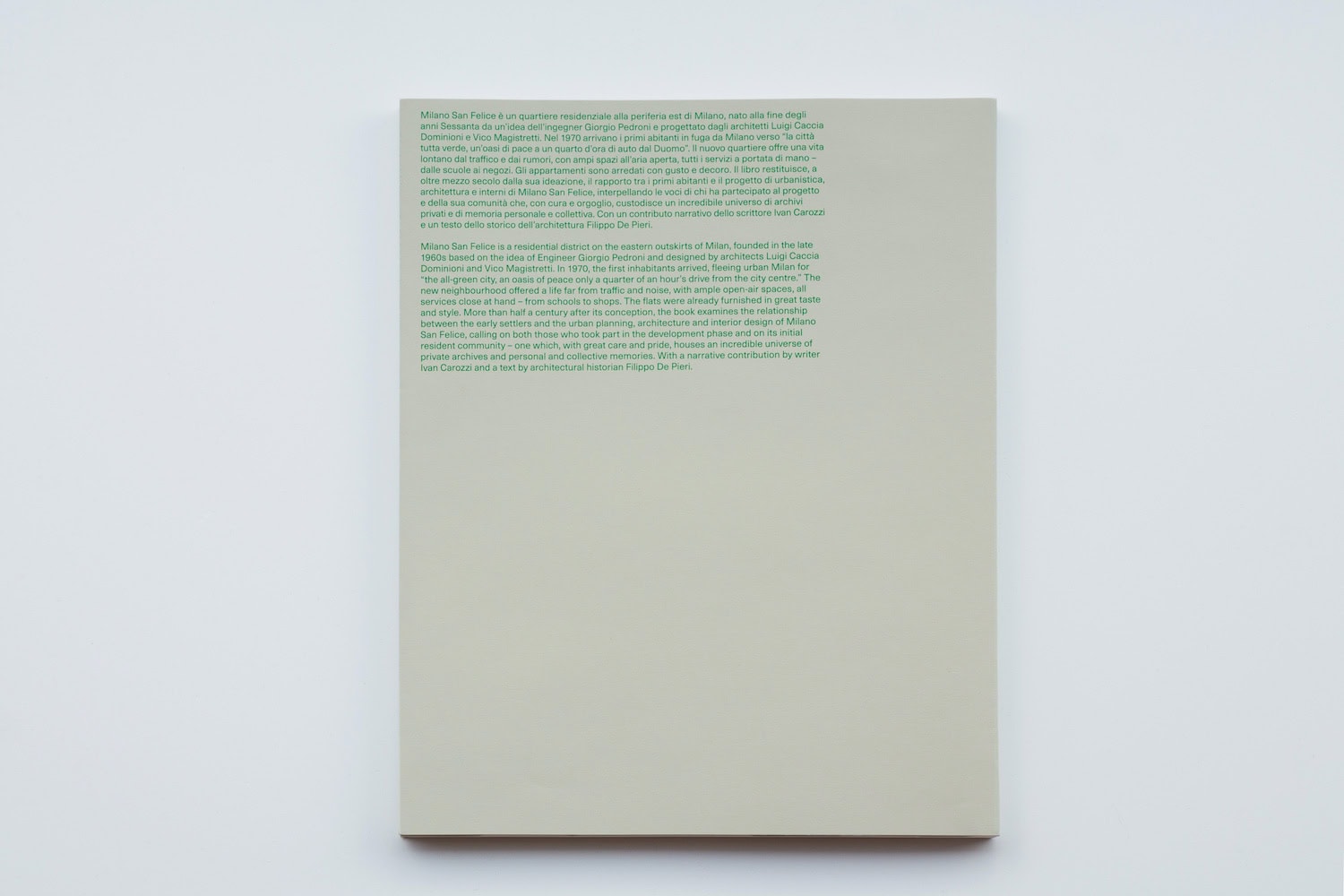BRACE BRACE is pleased to present Venite a vedere Milano San Felice (Come and see Milano San Felice), an exhibition conceived on the occasion of the release of the book Golfi verdi e Panga Panga parquet. Green gulfs and Panga Panga parquet. Milano San Felice edited by Elisa Di Nofa and Francesco Paleari, published by Humboldt Books, with the support of Condominio Centrale Milano San Felice. The volume presents the research on the relationship between the early settlers and Milano San Felice, a residential district on the eastern outskirts of Milan, founded in the late 1960s, based on the idea of Engineer Giorgio Pedroni and designed by architects Luigi Caccia Dominioni and Vico Magistretti.
In 1970, the first inhabitants arrived, fleeing urban Milan for “the all-green city, an oasis of peace only a quarter of an hour’s drive from the city centre.” The new neighbourhood offered a life far from traffic and noise, with ample open-air spaces, all services close at hand–from schools to shops. The flats were already furnished in great taste and style. More than half a century after its conception, the book examines the relationship between the early settlers and the urban planning, architecture and interior design of Milano San Felice, calling on both those who took part in the development phase and on its initial resident community–one which, with great care and pride, houses an incredible universe of private archives and personal and collective memories. With a narrative contribution by writer Ivan Carozzi and a text by architectural historian Filippo De Pieri.
The exhibition Venite a vedere Milano San Felice is hosted in the first building of the district, located at its only entrance: the gatehouse Il Girasole. The structure, with an elliptical plan, has an impressive plane tree in the center and is surrounded by glass along the entire perimeter. Objects and documents coming from the research enter the exhibition space and, used as narrative triggers, are articulated in a series of environmental installations where the languages of architecture, design, and archives merge toward a visionary and imaginative horizon. The iconic balconies and the T-shaped vases of the neighborhood are used as support surfaces for violet glass spheres which become viewing devices for photographs, advertising material and everyday objects with a strong symbolic value. On the large ribbon windows some excerpts from the pages of the neighborhood newsletter restore the portrait and the polyphony of his community. The photographic enlargement of an architectural model covers a large semicircular wall, a utopian panorama that acts as a counterpoint to the neighborhood that is simultaneously, in the flesh, outside the windows of the exhibition space. The exhibition invites visitors to immerse themselves in the atmosphere of a neighborhood far from traffic and noise, with ample open-air spaces, where everything is order, functionality, disorientation; the exhibition invites an in-depth look at what has been the promise of a greener, healthier and more elegant future of living.
Elisa Di Nofa (Milan, 1992) is a communication designer. She deals with research, processes and strategies in communication and service projects. She is concerned with the study of narrative modes and curatorial communication pathways, with a passion for publishing design, the world of culture and archives. She lives and works in Milan.
Francesco Paleari (Milan, 1992) is an author who works with photography. He is interested in photographic publishing, devoting himself to both authorial and collaborative research projects in the fields of architecture, urbanism and landscape. As of 2019, he has been a lecturer on the Master course in Photography at Iuav University in Venice. He lives and works in Milan.
